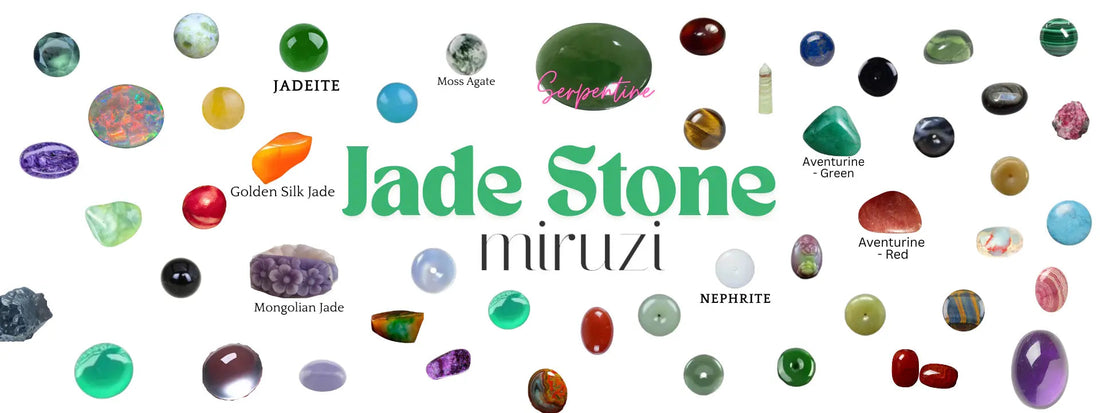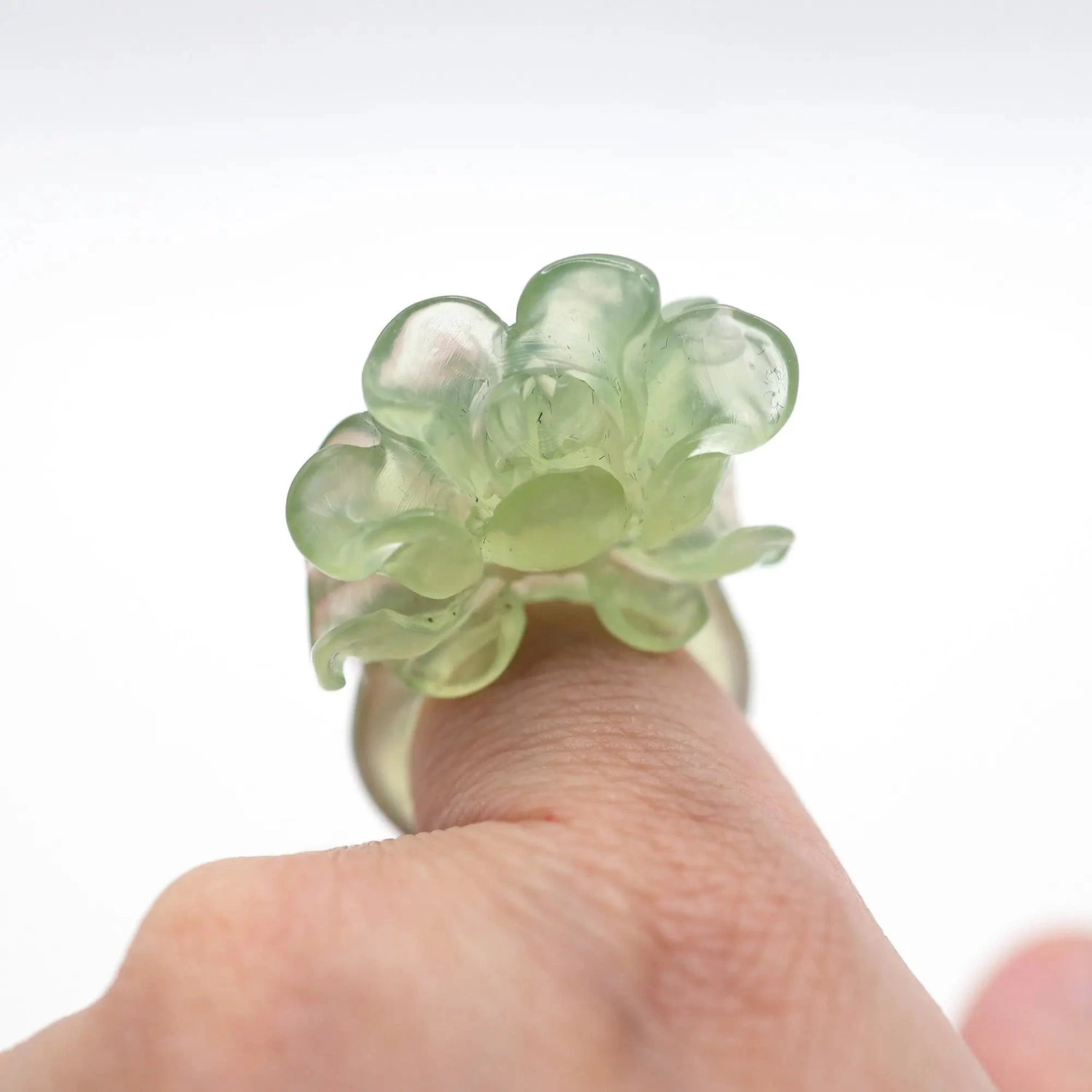
A Guide to the Different Types of Jade: Exploring the Beauty of Natural Jade Stones
Share
A Guide to the Different Types of Jade: Exploring the Beauty of Natural Jade Stones
When people think of jade, they often picture a vibrant green stone. However, jade is actually a diverse group of minerals with a wide range of colors and origins. This article explores the types of jade, from the classic green jadeite to lesser-known but equally stunning varieties used across cultures and centuries.
At Miruzi, we honor the rich history and geological complexity behind every jade stone. Whether you're a collector or a casual admirer, understanding the different types of jade can help you choose the right piece—one that resonates with both beauty and meaning.
The Two Primary Types of Jade
There are two mineral species that are officially recognized as jade: jadeite and nephrite. Though they share some visual similarities, they differ in composition, structure, and regional use.
Jadeite – Known for its Vibrant Colors
Jadeite is the rarer and more valuable of the two main types of jade. It is primarily found in Myanmar and is celebrated for its high translucency and vibrant color palette. Common jadeite colors include:
- Green (the most famous “imperial” color)
- Yellow
- Red
- Lavender
- Black
- White
- Multi-colored (often seen in natural variegated jadeite)

These colors reflect the mineral content of the stone and influence its value. Among collectors, imperial green jadeite remains the most sought-after variety.
Explore our jadeite jade earrings →
Nephrite – Gentle Beauty with Rich Cultural Roots
Nephrite, often referred to as Hetian jade in China, has a softer texture and a waxy luster. It has been a central part of Chinese culture for over 4,000 years. Nephrite appears in several distinct forms:
- White Jade (Baiyu)
- Green Jade (Qingyu, Biyu)
- Yellow Jade (Huangyu)
- Sugar Jade (Tangyu – with a caramel tone)
- Ink Jade (Moyu – black jade)
- Flower Jade (Qinghua – with dark patterns)
Quartzite-Based Jades: The Silicate Group

These stones resemble jade and are often used in jewelry due to their hardness and beauty. They're divided into cryptocrystalline and crystalline types.
Cryptocrystalline Jades
These are fine-grained stones that look smooth and waxy:
- Chalcedony (e.g. Australian jade, Taiwan blue jade)
- Agate (e.g. Southern Red Agate, Warring States Red Agate, Moss Agate)
Crystalline Jades
These stones have visible crystals, often with chatoyant or fibrous effects:
- Golden Silk Jade
-
Mongolian jade

- Aventurine - (Red & Green)
Explore the Floral Jade Bangle – Enchanted Green Mongolian Jade with Hand-Carved Flowers made of Aventurine
Petrified wood
- Hawk’s Eye
- Golden Silk Jade
Carbonate Jades and Natural Glass
Some jades are formed from carbonate minerals, while others are natural volcanic glasses:
Carbonate-Based Jades
- Afghan Jade – Often green, smooth, and affordable
- Rhodochrosite – A striking pink-red crystal with heart chakra associations
Want to learn more about this beautifully vibrant gem? The International Gem Society offers an in-depth guide to rhodochrosite’s history, properties, and uses in jewelry.
Natural Glass Stones
- Obsidian – Volcanic black glass
- Moldavite – Space-born green tektite
- Basalt Glass – Formed from molten lava
Other Popular Jade-Like Stones
Finally, we have a group of unique and colorful stones often carved like jade:
- Dushan Jade
- Serpentine (Xiuyu)
- Lantian Jade
- Charoite (Lavender-purple with swirls)
- Sugilite (Deep purple spiritual stone)
- Rhodonite (Pink with black veins)
- Shoushan / Seal Stone (For carving and stamps)
- Malachite (Deep green with stripes)
- Turquoise (Blue-green, often with matrix)
- Lapis Lazuli (Royal blue with gold specks)
- Hydrophane Opal / Water Stone
- Opal (Iridescent)
- Prehnite (Pale green, grape-like texture)
Serpentine (Xiuyu) – A Beloved Stone in Traditional Chinese Carving
In traditional Chinese sculpture, serpentine is one of the most widely used materials. It features a soft glow, translucent texture, and warm green tones ideal for floral, animal, and spiritual motifs.
At Miruzi, our statement jade jewelry is often crafted from premium-grade serpentine. Every piece is hand-finished to honor the artistry and legacy of this beloved stone.
👉 Blizzard Whisper Statement Ring – Lemon Green Serpentine
(Insert image of the ring here, or carousel with product thumbnails)
Each ring or bangle is more than just a piece of jewelry—it’s a miniature sculpture that reflects the soul of the stone and the skill of the carver.
Why We Celebrate Jade at Miruzi
Every stone we use tells a story—from the mineral's formation to the hands that carved it. Whether it's a luminous jadeite earring or a serpentine sculpture, each piece reflects cultural identity, craftsmanship, and beauty.
When you wear jade from Miruzi, you carry a tradition that spans continents and centuries.
Related Posts:


